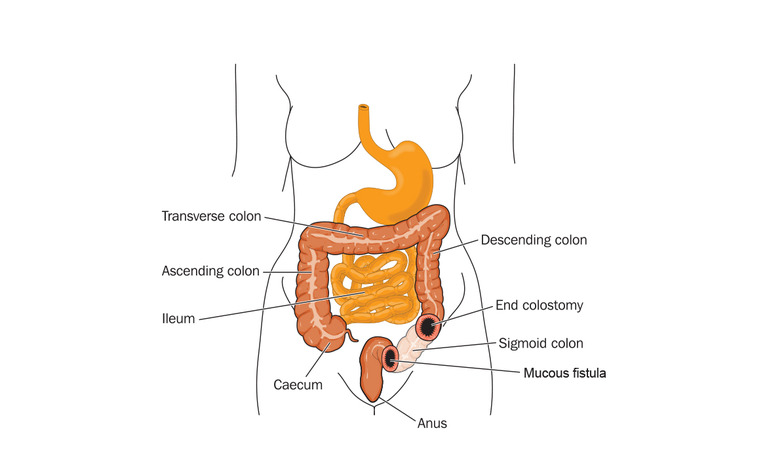
A mucous fistula is a type of stoma which is formed from a disconnected piece of bowel and allows mucous to leave the body.
If you have surgery to remove part of your bowel and have a stoma formed the disconnected part of the bowel will continue to produce gas and mucous. This gas and mucous needs to leave the body somehow. A mucous fistula allows this to happen. A mucous fistula is a stoma which allows the mucous to be collected in an ostomy bag. This may mean that you have two stomas. It is also known as distal mucous fistula.
If you have a loop ileostomy or colostomy then a mucous fistula will not be needed. One side of the loop discards food from your body out through the stoma and the other end discards the mucous into the same bag.
A mucous fistula may be created for both Crohn’s disease and ulcerative colitis.
When the colon is disconnected from the upper part of the gastrointestinal tract it still continues to produce gas and mucous even when food waste is not passed through it. One way of expelling the gas and mucous from the body is through a stoma - the mucous fistula. Another way is to pass it is for the end of the bowel to sealed and the gas and mucous to pass through the anus.
Mucous fistula surgery is usually carried out at the same time as surgery to create an ileostomy or colostomy.
Following surgery to form a stoma, such as an ileostomy or colostomy, the disconnected end of the bowel will be pulled through the surface of the abdomen to create the mucous fistula. It will be stitched to the surface of the skin to create the stoma.
Having a stoma may seem very daunting and it will take you a bit of time to adjust to it. In the days after your surgery you will remain in hospital and specialist nurses will help to care for your stoma and teach you how to care for it yourself.
Your stoma will look moist, pinkish/red and seem quite large. This is perfectly normal following surgery and as it heals you will find that the size of your stoma reduces by around two thirds. This usually takes around 6-8 weeks. Everyone’s stoma is a different size.
You may also find that your stoma produces some noisy gas. This will settle.
Once you are well enough, and you feel confident managing your stoma, you will be able to return home. This could be after 3-10 days. You will probably be told to avoid certain activities - such as heavy lifting - for several weeks after your surgery.
Once the mucous fistula has healed it should appear small, flat and pink/red.
Complications which can occur soon after your surgery include:
Complications which can occur anytime after your surgery include: